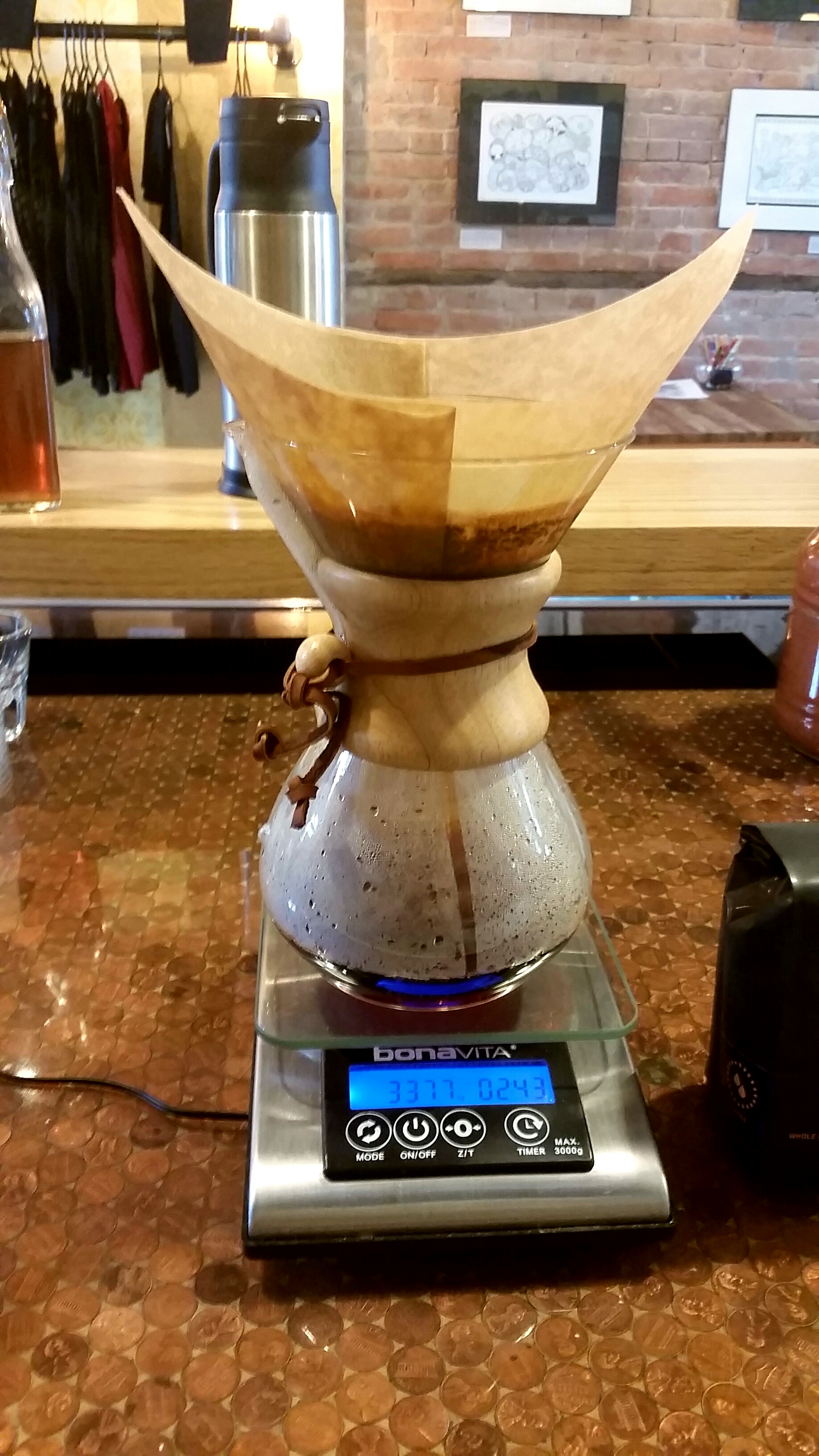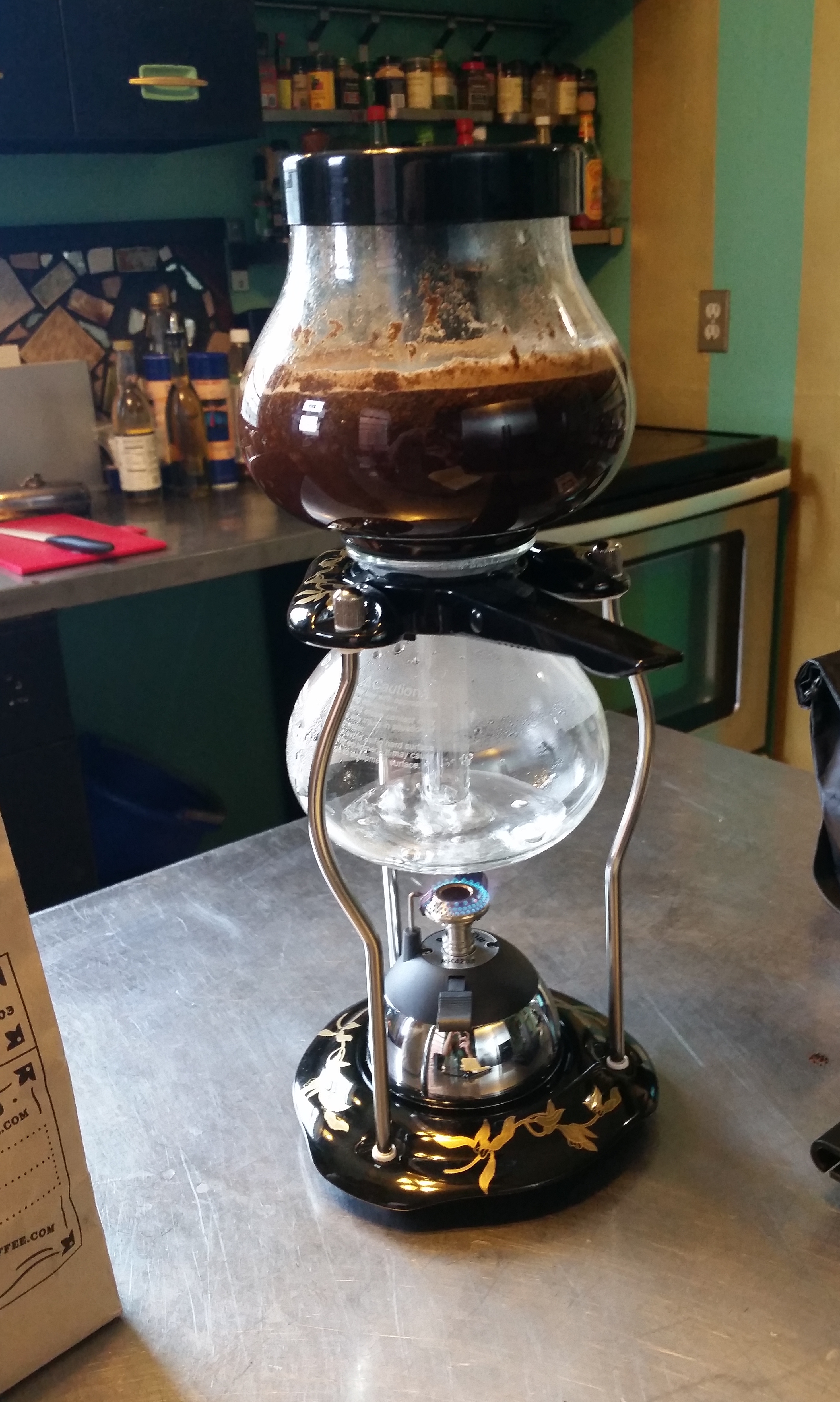The Craft Coffee Methods of Artisan Cafe

Pour Over
Pour Over coffee is a slow, manual method of coffee brewing in which you drip hot water through a filter-covered cone in an even, spiral motion. It is pleasant to watch the water slowly work its way down through the grounds. The results are very distinct; the flavor profile is bright and sweet, with subtle notes. If the coffee is made carefully and brewed correctly, you can actually taste the flower and the fruit.
Pour-over coffee requires quality beans, a certain kind of carafe, a special kind of kettle with a narrow, focused spout, and the patience to watch as small amounts of water work their way through the grounds. The spout produces a precise stream which instead of flooding the filter and letting it drip, releases a measured amount of water over a period of several minutes.

Chemex
The Chemex Coffeemaker consists of an hourglass-shaped glass flask with a conical funnel-like neck.
Because Chemex’s long neck encourages coffee to sit and soak in the filter longer, some say the coffee it brews is more robust.
As the thick paper filter sits flush against the walls of the server, water flows through the grounds more slowly and the dwell time is longer than other pour over methods.
The Chemex highlights the “higher” and “brighter” notes in coffee and yields a light, clean extraction with minimal sediment.
Bright, fruity coffees do very well in a Chemex. Additionally, the specialized filters may assist in removing cafestol, a cholesterol-containing compound found in coffee oils.
In 1958, the Chemex Coffeemaker was called “one of the best-designed products of modern times”. It is included in the permanent design collection of the Museum of Modern Art in New York City.

French Press
French press, also known as a сafetière à piston , is a coffee brewing device patented in 1929. It is ideal for making delicious cups of full-bodied coffee. Though initially patented in Italy, its popularity in France is what gave it its iconic name by which it is known across the world.
It is composed of a cylindrical pot with a plunger and built-in filter screen that presses hot water through ground coffee.
Cafetière à Piston requires coffee of a coarser grind, with about the consistency of sea salt granules. French press coffee yields a cup with a darker flavor and oily body. It’s better with coffees whose flavor is best highlighted by this process.
The French Press method allows the user to control the flavor profile and unfold the qualities of each roast by controlling crucial factors such as brew time and water temperature, ensuring that each cup is adapted to individual preferences.

Siphon
Once called”the most theatrical of all brewing methods,” the siphon coffee method dates back to the mid 1800s, when the opinion that boiling coffee had a negative effect on its taste became more widespread. This led to experimentation with vacuums and vapor pressure. The earliest known patent for a vacuum coffee maker was filed in the 1830s, with variations on the theme developed in France, Scotland and America, as well as Japan.
Full immersion brewing brings out coffee’s fruity notes and yields a clean, refreshing cup. As opposed to metal-filtered presses, siphon coffee has minimal sediment.
Siphon offers control of many brewing variables, as well.
This is the way it works: There is a coffee pot on the bottom and a large tank on the top in which are placed the grounds. They are connected by a tube, with a coffee filter separating them. When heat is applied to the vessel at the bottom and the water boils, vapor pressure pushes water into the top chamber. There, the water mixes with the coffee grounds. Turning the heat down or off reduces the vapor pressure, and the coffee flows back down into the lower chamber, filtering the grounds out in the process.
Artisan Cafe utilizes state of the art equipment married with high quality coffee beans and knowledgeable baristas to provide you with the highest quality experience. Feel free to stop by and try a cup of coffee brewed with painstaking care using each of these specialized methods.






